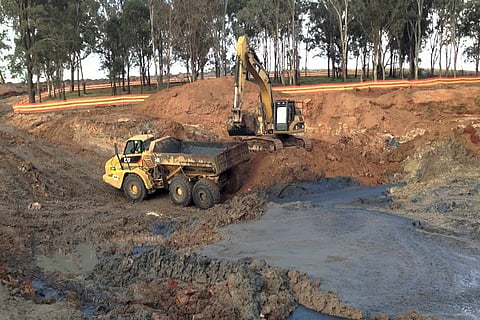

The Tamil Nadu government began the desilting work in the Mettur Dam across Cauvery river on Sunday, a day after Tamil Nadu Chief Minister Edappadi Palaniswami announced that 2,065 water bodies across Tamil Nadu will be desilted.
This comes days after DMK working president MK Stalin said that his party will be desilting the water bodies in Tamil Nadu as the government was not interested in people’s problems like drought and scarcity of water. He added that all the 89 DMK legislators will be taking steps to desilt water bodies.
On his part, the Chief Minister has ‘welcomed’ the DMK’s move. “The opposition party also has accepted the Amma government’s scheme,” he said.
The government has planned the desilting of the water bodies at a cost Rs 300 crore. Here’s why it is important for the drought-hit state.
What is desilting?
Silt means, "A sedimentary material consisting of grains or particles of disintegrated rock, smaller than sand and larger than clay.” The process of removing the deposited silt is known as desilting.
Importance of Desilting
“Silt is the residue of plants and waste material including plastic. It is accumulated when the water travels,” explains P Vincent, environmentalist, who works with an NGO called ‘Gram’ on preventing soil erosion.
The desilting of water bodies in TN will mainly help the farmers, he says.
“By desilting, we will be able to get more fertile soil, and the groundwater level will also increase. Once the groundwater is recharged, it will benefit the farmers nearby,” Vincent explains.
Pooja Kumar of the Coastal Research Centre says that desilting will increase the water carrying capacity of the waterbodies.
“If there is silt, the depth of the water bodies will reduce and the capacity of the waterbodies will also go down. So, in a pond or a lake, in order to maximise storage and water carrying capacity, desilting is carried out. Secondly, it also mitigates flooding. When the carrying capacity of the water increases, the incidences of flood will reduce,” she explains.
However, a research paper by GP Soni of IIT Roorkee on ‘Myths and Realities about desilting’ states that during the desilting process, if heavy excavation machinery is used, there are chances that in addition to the deposited silt, the strata of original lake will also get removed.
Moreover, according to the research paper, after desilting, there can be increase in percolation rate which could result in heavy seepage losses through the lake.
Environmentalist Nityanand Jayaraman says that desilting has to be be done very carefully, and that only indiscriminate deepening can be a problem.
“It should be done to a certain extent, it cannot be deepened a lot. There is no problem if the silt is removed and the water body is restored to its original depth. Desilted mud can be used to strengthen bunds or create islands inside the water bodies to increase area for water recharge,” Nityanand explains.
Watch the video:
Video courtesy: YouTube.com